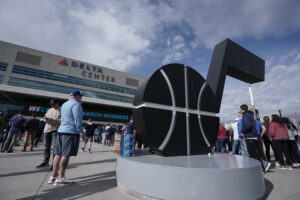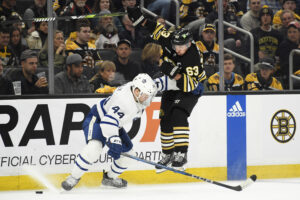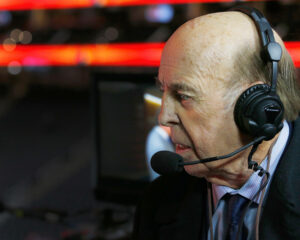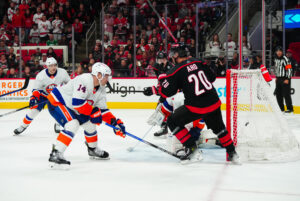As the NHL season quickly approaches, armchair general manager’s everywhere hurriedly begin preparing for their fantasy hockey drafts. Rookie camps will be followed by training camps, and it all culminates in a quick pre-season that gives you one last opportunity to scout players for your fantasy hockey team. This guide will help you outline your team, prioritize players and begin planning the picks that will make up your championship roster this season.
2017-18 Fantasy Hockey Draft Guide
Player/Position Tiers
One of the best ways to begin planning your draft is to tier players. A great way to evaluate who should be taken where, or rather, where you think they should be taken, is to establish groups of players with similar value. After all, value is what is going to win your league. Tier players, by position, in groups of priority from highest to lowest. Players in these groups will be almost interchangeable, as they are meant to be guidelines for who will be your best pick available at the time.
After tiering players, look to establish some positional priorities. Centres will be your most readily available position throughout the year. As such, you can look to find quality centremen later in the draft or in waivers after the draft. Early in the draft, you may have opportunities to take elite defensemen like Erik Karlsson and Brent Burns. You may want to prioritize these players, as high scoring defensemen are a premium commodity in fantasy hockey.
This order should be used as a guide, though. If there is an elite level centremen that has been passed up, don’t be afraid to take him instead of the left wing you planned on taking. That is where your player tiers come in, so you can pick the next best option in that tier.
The Goalie Question
One of the most common draft questions is when to pick your first goalie. Having weak goaltending can potentially make or break your team, so you want to be sure you don’t wait too long and miss legitimate options in net. At the same time, drafting one or two goalies too early may leave deficiencies in your skating lineup.
My goaltending strategy is usually to let someone else pick the first goalie. Oftentimes, once the first one is picked, two or three will be picked that round as managers fear their prized goaltender being pulled out from under them. Don’t get caught up in the frenzy; Capitalize by taking the elite defenseman or an 80 point centre they pass on in the first or second round. Once things settle down, look at your goalie tiers and find the next netminder you have lined up and take him in the third, or fourth round if you are confident he will make it that far.
Plan Your Picks
Be aware of the draft order and try to plan the first few rounds. The first four or five rounds you should be looking to pick the best players available. At five picks in, there is enough room left on your roster to strategically pick positions. Many of the crossroads you come across when tiering players will solve themselves as someone else picks the guy you had your eye on.
Your position strategy will come into play in the later rounds, 5-15, where other managers start picking players who don’t appear at the top of the player rankings. Again, this is where your tiers come in handy, so don’t worry if you miss one or two players you figured you would be able to scoop up earlier. At the end of the season you would be surprised how many players drafted in the 13th round put up 50 points.
Research
There is plenty of material available for doing fantasy hockey research. Websites like DailyFaceoff give you projected lineups so you can find under the radar players who may have snuck into top six spots.
Our own writers at Last Word On Hockey are also completing the ‘Puck Drop Preview’ series (here is an example, looking at the Dallas Stars), outlining every NHL team’s lineups, risers and fallers, and giving quick 2017-18 predictions. The league’s host site will also likely have point projections, pre-draft rankings and ADPs (average draft positions) to help you draft. However, don’t take projections as gospel. Consider age, teammates and player history when researching your picks.
Eric Staal, for example, had his best year in five seasons at age 32. He shot 3% higher than his career average, and twice as high as his 6.5% from the year before. At an age where players typically begin to decline, it would be unlikely he posts another 65 point season. Using this research will help you accurately value players and not overvalue others.
In Draft Tips
Set your pre-draft rankings. Things may come up before or during your draft. You don’t want to rely on the autopick to draft you a winning team. Setting your pre-draft rankings or queuing up picks during the draft can really help you if you have to step away for a second.
Consider doing some mock drafts. Doing mock drafts will gives first time managers a better idea of how drafts work. They will also give some insight on drafting tendencies, like what players are being taken higher or lower than their ADP suggests.
Don’t get caught up in the “goalie runs.” Let others reach for goalies early on and capitalize on their eagerness.
Don’t favour one or two strong teams. A common pool strategy is to ride players who play for a strong team. While owning two guys on the same top line can be a great idea (Patrick Kane and Artemi Panarin were a favourite combo for a couple years), owning two right wingers from the same high scoring team may force you to chose between them for roster spots. Spread your picks around different teams as much as possible
Watch other teams’ rosters. If a lot of defensemen or goalies are being taken in later rounds, keep an eye out and make sure there are still viable options if you need another player at those dwindling positions.
Be mindful of positional eligibility. Some players will be able to play two or three positions in your roster. Brayden Schenn, for example, is listed as a C/LW. Having a handful of dual eligibility players is key in fantasy hockey, as it will make it easy to juggle lineups and fit more players in on a busy night.
Be aware of openings in your lineup. After you work through the first four or five rounds, picking the best players available to you, you can start to focus on filling out your roster evenly. Pick extras at every position to fill out your bench, giving you options every night.
Auction Tips
Auction drafts require some different approaches to drafting. The fact that you have a budget to allocate to players can create a psychological factor that doesn’t apply to snake drafts. Your tiers will still be effective in an auction draft, so keep them close while considering these other tips as well.
Allocate positional budgets. Similar to your position priorities, establish a general limit for spending on different positions. Divide your budget and do your best to follow it, so you don’t overspend early and leave holes in your lineup.
Nominate big names early, even if you have no interest in them. Forcing other mangers to pay big early will help when you nominate the players you really want later. Here is where it gets psychological. If you know another manager has a favourite team, nominate the stars or their favourite players to put them in a tough spot early.
Pay for your stars. You will have to pay to get the top guys. There’s no two ways about it. The Connor McDavid’s, Sidney Crosby’s and Carey Price’s will demand top dollar. You may be able to pick up a Vladimir Tarasenko or Jamie Benn for under market value, but be sure to pay for some stars, you can’t win without them.
Make the most of your dollar players. Towards the end of the draft, when managers have spent to their budget, there will be quality players available for $2 or $3 a piece. Scour the draft rankings and find the best deep picks to prevent them from hitting waivers.
Leave no money on the table. Spend to the budget and make the most of your money. If part of your left wing budget is left over, use it on another position you need.
Watch other teams’ budgets. If the manager you are bidding against only has $15 left to spend, don’t bid $25 to be sure you win the bid. Bid $10 to see if they are serious, and $16 to guarantee you win. Spending smart will conserve your budget.
Beware the bid game. Bidding up other managers is a good strategy if you are confident they will pay. But buyer beware; You may get stuck paying the tab if the other managers don’t bite.
In conclusion
Of course, this is meant to be a guide more than it is a strict success model. The number of teams in a league, draft position, league scoring and draft type will all influence drafting strategy. And ultimately, the draft can throw a few curveballs at you that will really mess up your preparations. Two goalies being picked before your first selection may force you to rethink your goalie strategy. Thinking quickly and being able to change your strategy on the fly sometimes.
Lucky for you, if you have a bad draft it is not the end of your season. The fantasy hockey season starts with the draft, but it is rarely won there. Making shrewd trades, watching the waiver wire, setting good lineups, and paying attention to your team is what will ultimately make or break your fantasy hockey season.
So be ready for your draft and stay ready, because the season is just around the corner.
Good luck!
Main Photo:






